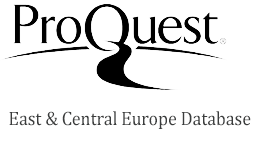Opis
Rocznik ukazuje się od 1993 roku nakładem Polskiej Akademii Umiejętności.
Jest to czasopismo o profilu łączącym dziedzinę nauk społecznych (nauki o polityce i administracji, stosunki międzynarodowe, bezpieczeństwo narodowe) oraz humanistycznych (historia), którego założycielami byli profesorowie: Henryk Batowski, Maria Bobrownicka i Jan Machnik.
Publikowane na łamach czasopisma artykuły są efektem zarówno wystąpień prezentowanych przez autorów i dyskutowanych na posiedzeniach Komisji Środkowoeuropejskiej PAU, jak i zgłoszeń naukowców polskich i zagranicznych przyjętych w otwartym naborze (call for papers).
Do 2015 roku rocznik ukazywał się pod tytułem “Prace Komisji Środkowoeuropejskiej”. Od numeru dwudziestego czwartego, opublikowanego w 2016 roku, przy zachowaniu ciągłości numeracji tomów, jego tytuł został zmieniony na „Studia Środkowoeuropejskie i Bałkanistyczne”. Motywem, który łączy różnorodną, publikowaną na łamach czasopisma tematykę, są zagadnienia koncentrujące się wokół obszaru Europy Środkowej oraz Południowo-Wschodniej (Bałkanów).
ISSN: 2451-4993
eISSN: 2543-733X
Punkty MNiSW: 70
UIC ID: 491043
DOI: 10.4467/2543733XSSB
Redakcja
Redaktor naczelny:
dr hab., prof. UJ
Mirella
Korzeniewska-Wiszniewska
Członkowie Rady Redakcyjnej:
dr hab., prof. UJ
Mirella
Korzeniewska-Wiszniewska
prof. dr hab.
Józef
Łaptos
prof. dr hab.
Artur
Patek
prof. dr hab.
Irena
Stawowy-Kawka
Afiliacja
Polska Akademia Umiejętności






















